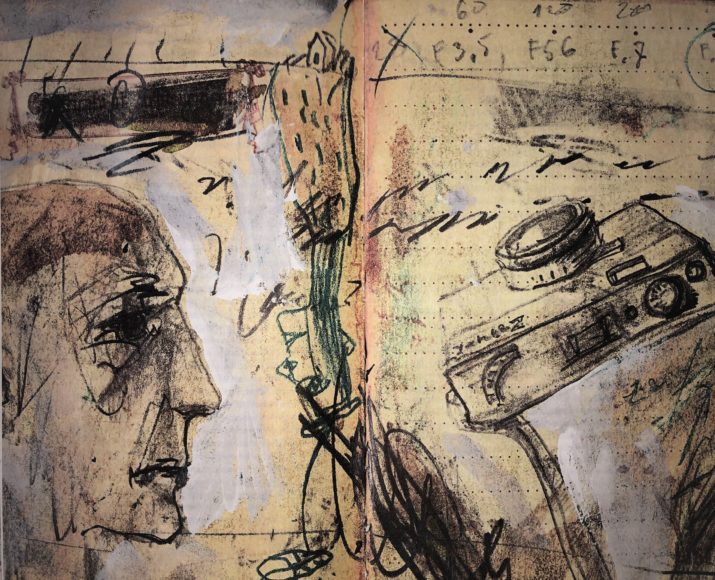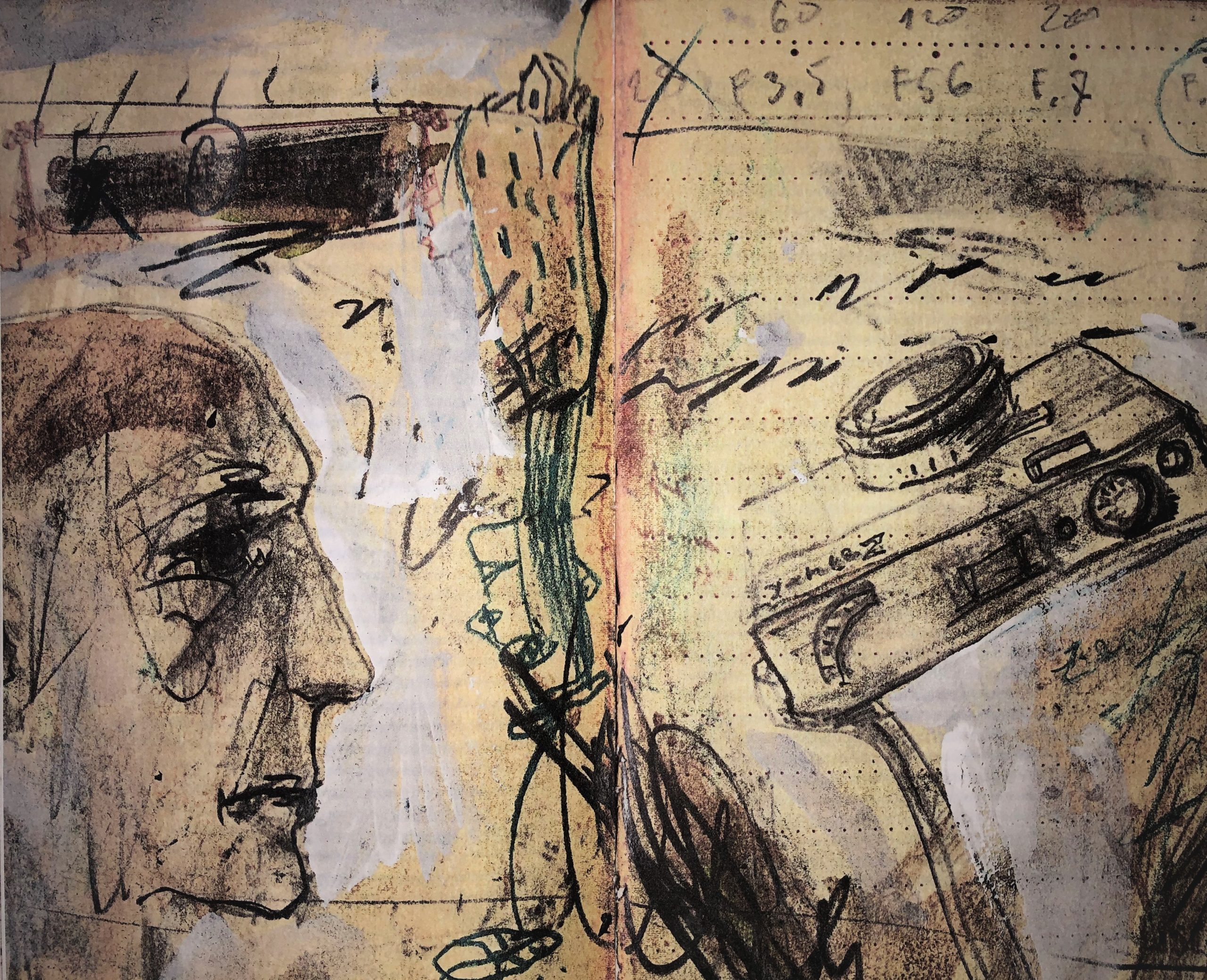
Georgi Gospodinov’s The Story Smuggler: Teaching Europe through Contemporary Experimental Literature

This is part of our special feature, Imagining, Thinking, and Teaching Europe.
As a full-time adjunct, I have taught European history in various shapes, sizes, and settings. I have taught it as an outgrowth of the early civilizations of the ancient Near East and as a product of new Christian, then Enlightenment, then industrial-imperialist consciousness in Europe since the Thirty Years’ Wars in Western Civilization surveys. In courses more specifically devoted to the nation-state, I have presented twentieth-century Europe as the expression of tensions inherent in early twentieth-century industrial capitalism and communism. Among these are stressors and stabilizers that include the entangled phenomena of state-building and nationalism, the conversion of high into late capitalism and communism, and the fall of empires and their afterlives in neocolonial relations with the Global South.
Regardless of the academic setting (community college, four-year liberal arts college, or large research universities), I have always supplemented the historical texts and traditional primary sources with fiction and poetry from the period. Nevertheless, it was only recently in my Postwar Europe class that I ventured to teach Europe (and in this case, a uniquely Eastern, Bulgarian Europe) through experimental literature. Such a text is a departure for most American students who have little previous exposure to any type of avant-garde writing, especially that originally composed in a language other than English. Nevertheless, departing from the norm is a worthwhile and rewarding pursuit. Writing and even reading experimental literature can, in itself, be an act of creative critical analysis. In certain contexts, moreover, it can be an overt act of civic engagement, resistance, and self-realization. With that as my starting point, I introduced Georgi Gospodinov’s The Story Smuggler to my class.
The Story Smuggler as historical source
The text is critical, but so is the setting. The course in which I introduced this text was advanced. Most students were pursuing degrees in history or related fields. All had worked their way up through the university’s curriculum in some humanities discipline and, therefore, were prepared to grapple with writing that was less linear than what students typically encounter in history classes. That said, none had much exposure to or prior interest in contemporary literary non-fiction or poetry and all would likely have encountered great difficulty with anything too postmodern. Therefore, I chose Georgi Gospodinov’s The Story Smuggler. Gospodinov is one of the most important Bulgarian writers of today―this accolade, of course, meant little to my students. Hardly an expert in Bulgarian literature myself, I first encountered Gospodinov’s work a few years ago while wandering around the pages of EuropeNow. In 2017, the journal published a special feature, Contemporary Bulgarian Literature, which featured Angela Rodel’s translation of an indulgently ironic short story “O, Henry!” Since then, I started working my way through whatever works of his I could find that had been translated into English. Poring through those, The Story Smuggler fell into my lap right around the time I was planning this course.
The Story Smuggler is a curious experimental work. t is short (forty pages) and consists primarily of Gospodinov’s own writing occasionally accompanied by abstract, multi-media illustrations from the Bulgarian/Canadian artist Theodore Ushev. Gospodinov provides the primary link as narrator and recurrent figure through these memories; otherwise, disjointed vignettes are connected only by a common meditation on the role that words and stories—whether fact, fiction, or amalgam—play in experiencing, interpreting, and remembering life in a communist and post-communist Bulgaria. As much as words and memory speak to what was present and experienced, moreover, they also highlight what was absent.
The first line of the book introduces the conundrum that drives Gospodinov’s non-chronological account of his everyday life over the last four decades: “Is the Bulgarian word Тъга (“taga:” sorrow, melancholy) truly translatable? Are we, and our childhoods, translatable?” (Gospodinov, 5). And, akin to Milan Kundera’s The Unbearable Lightness of Being, the rest of this book examines the ennui that consumed the last generation to come of age under Eastern European communism, albeit in a specifically Bulgarian context mediated through Gospodinov’s own memories formed, mulled over, and reformed over several decades.
Crafting a lesson around disjointed memory
How does one get students not only to read this book but also to grapple with its ambiguities, its non-linear narrative, its narrative detours, and its wider abstractions? I allotted one entire week’s reading to this text; unfortunately, this only allowed for a seventy-five-minute discussion. I spent the previous two weeks of class tracing communist Europe’s stagnant 1980s and its collapse at the end of the decade. By the time we reached The Story Smuggler, students were well-versed in the course of communism in the Eastern Bloc, surveillance and journalistic dissent (having watched, discussed, and written about the film The Lives of Others), and the social contract erosion and disillusionment that had set in among Eastern European, though not specifically Bulgarian, populations.
With the limited class time devoted to this text, the unit consisted of three components: reading assignments for homework, an in-class activity, and a three-five-page essay. Students had one full week to read the book after receiving a brief introduction to Bulgaria in the 1980s. Their assignment was to attend the next class with notes defining Тъга in contexts either specific to Gospodinov’s life or Bulgaria more broadly. Our next meeting started with the dissecting of the first two pages of the book. First, we read the opening paragraphs aloud to establish the rhythm of the writing in English translation. After we used those paragraphs to discuss possible definitions of Тъга, we re-established the opening scene through one of Ushev’s multimedia paintings. This was a minor challenge, as the pictures are collages of both representational and non-representational elements. Reading these as a supplement to the text opened the discussion to the relationships between memory, imagination, and representation that was necessary to unlocking the book.
Once we collectively worked through Gospodinov’s first memory—a deeply wistful scene of he and his grandfather eating tripe soup at a restaurant while Gospodinov as narrator mulls over the unintended ironies of a sign proclaiming writers “surgeons of the soul,” I separated the class into groups of four to five members. Each group was tasked with finding two additional instances of Тъга as memory, contemplation, or storytelling, and determine the narrative and historical setting in which that example is offered. This took approximately twenty minutes. The remainder of the class was used for brief group presentations of the students’ findings and class discussion about Тъга’s uniquely Bulgarian (per Gospodinov) and more universal aspects.
These exercises offered only a limited opportunity to delve into Bulgaria as a case study. To extend the lesson outside of the classroom, I shaped a course paper around this book. In short, the assignment asked students to choose one Eastern European country covered in our course text (Ian Kershaw’s The Global Age: Europe 1950-2017) and trace its decline and fall through Gospodinov’s experiences in communist and post-communist Bulgaria. How far could Тъга, Gospodinov’s idea of longing for something never experienced and maybe not even attainable, be stretched? How could it relate to other countries of the Eastern Bloc and the popular protests that toppled their governments? How, moreover, can we read the effects or absence of such sentiments into the days following the fall of communism: the elections, the changing East-West orientation, the successor governments, the adoption of new economic and political systems?
The subjective and the universal: some challenges of applying Тъга beyond Bulgaria
I was initially concerned that students would resist acquiring a book of experimental literature for just one week of reading and one class’s worth of discussion. To my delight, however, they took to the The Story Smuggler quite well, expressing their enjoyment and appreciation of the text throughout our discussion. The few who had experiences in Eastern Europe in the 1970s and 1980s were particularly open to Gospodinov’s elaborations of Тъга and his thick descriptions of scenes from every-day life. Even among these students, however, few had any experience with late or post-communist Eastern European literature; this unfortunately prevented discussion about how novel or representative this book was of the broader literary culture. That said, many in the class expressed a good understanding of key elements of the book and the window that this type of writing can offer into the history it describes, as well as the contemporary situation in which it was written.
Some student reactions may be specific to The Story Smuggler as a text, rather than the lesson. I chose the work in part because of its deceptive banality and elegant language. Gospodinov’s accounts of longing to visit Paris, collecting foreign mementos, and exchanging notes in class with scribbled rock band logos (in this case, AC/DC) and teenage non sequiturs are deeply relatable to students today. In The Story Smuggler, however, these actions—as well as the acts of writing and reading in general – take on more overt ideological significance than in western environs. The issue was not just that Gospodinov and his friends were into rock music, but into western rock music. It was not just that this generation yearned for an imagined Paris, but that government policy made the possibility so remote (and subsequently the urge so strong) that people started to doubt the city’s very existence, wondering whether its idea “had not been invented by Capitalists in order to irritate us” (Gospodinov, 16). This duality of familiarity and alienation, the personal relationship with Gospodinov’s actions, and the realization that their sociopolitical environs imbued them with a different ideological significance seemed to draw students in.
In their papers, many students also expressed a sophisticated understanding of Тъга not simply as longing, but as “a longing, something unrealized, a dream of what has been lost forever or of what has never been achieved” (Gospodinov, 17). This insight is crucial to understanding the text. It is also important to acquiring a feeling for, rather than simply a cognitive recognition of, Gospodinov’s experiences under Todor Zhivkov’s regime, which in turn can be generalized to what others experienced under similar communist-authoritarian conditions in other Eastern European countries. One particularly astute student drew the following connection between Romania and Bulgaria:
Many (Romanians) began doubting (Nicolai) Ceausescu’s authoritarian leadership during this time, as he appeared a “latter day Nero luxuriating in a lifestyle of brazen extravagance and relishing a personality cult that plumbed the depths of servility and absurdity” (Kershaw 326). The dictator lost much of his early support, particularly among the youth coming of age. They had never known life before Communism, but they could see the prosperity just over the Iron Curtain. They, like Gospodinov, could not understand why the West appeared so prosperous while their government repeatedly told them of the evils and excesses of the West. The teachers taught the children of the East the sun rises from their land and from the Soviet Union (Gospodinov 12). They also instilled upon the schoolchildren that “sunset was patently a Western phenomenon, and nothing good could ever come from the West” (Gospodinov 12). Then why did the West appear so much better off?
This was one of the strongest submissions I received. The student chose a nearby regime to analyze, and generally drew conclusions about commonalities without falling into the trap of simply transposing Gospodinov’s subjective reflections about Zhikov’s Bulgaria onto Ceausescu’s Romania. This student likewise convincingly described an important aspect of Gospodinov’s prime analytical unit, Тъга: the contradictions between promises and propaganda about Eastern European industrial-economic advancement on the one hand and the apparent, though perpetually distant, prosperity of the West on the other. Other students drew interesting connections between, for instance, underground worker activist networks in Wojciech Jaruzelski’s Poland and Gospodinov’s memories of passing notes in school that were unconsciously political, and political primarily in the sense that they were not overtly communist. These observations, however, too frequently came as an afterthought at the end of the paper and therefore remained undeveloped. As I explained to one student who took this route, this is the type of statement that should have opened the paper and from which he should have derived a strong thesis about forms of resistance in authoritarian contexts. Still another student included a promising claim quite early in her paper. Speaking of the Polish worker movementSolidarność, she explained, “While protestors slowly chinked away at Poland’s Communist armor, the necessity of upholding a Soviet façade meant having to facilitate between, ‘two languages, one official, the other clandestine, quickly learning to alternate between two codes’ (Gospodinov, 13).” From here, however, the paper fell into a detailed but standard description of the marriage of Catholic and workers’ movements that so effectively undermined Jaruzelski’s regime. Gospodinov had fallen completely out of the discussion, which had also shed much of its early analytical potential.
Provisional reflections: scaffolding for critical skills
All in all, students were deeply engaged with this book and the discussion activity in class. The resulting essays, however, were mixed. Even many of my students who normally produced strong work struggled to read one book critically through the lens of another. Too many simply included a paragraph about Gospodinov as a juxtaposition to the real focus of their writing: a chronological account of the series of political developments that led to the collapse of a given country’s regime. ew integrated The Story Smuggler as an active and essential piece of their arguments. Exhibiting understanding of a text is one key component of historical analysis. Applying that understanding to other scenarios and arguments is another. This latter skill poses a greater challenge for many students dealing with almost any text. There are many possible roots to this issue. Most boil down to in-class preparation. Students, and even history majors, clearly had inadequate experience crafting an argument that was not solely causal. I had recognized this when I assigned the reading and paper and designed the assignments to develop these skills. In hindsight, the assignment nevertheless might have been testing skills that students had simply not practiced enough. That is, despite the fact that these are some of the very skills that our advanced undergraduate and graduate students should be developing in advanced classes.
Viewing history through different analytical lenses and perspectives and reading works together rather than discretely are concepts that I clearly needed to introduce and reinforce more effectively. In the future, I intend to include greater scaffolding for such critical analysis throughout the semester in the form of class discussions and short writing assignments. A slower, more methodical introduction to this type of applied analysis may allow students to engage the arguments more confidently and with greater sophistication.
I also intend to continue using this book in my Postwar Europe course. It is brief but dense with vivid detail and provocative thoughts. It is a non-linear, montaged narrative of selective memories and reflections and the collage-illustrations that periodically accompany the text read almost like an art-house film. These abstractions, moreover, create a sense of fog, which parallels the haze in which memories (both Gospodinov’s and our own) reside. Students responded to this point.
What is lost in in the fog, however, is the clarity of argument that most history texts and more popular literary works posit. This makes The Story Smuggler particularly enjoyable and valuable; it also means that students may need an extra class of scaffolding (as one would do when introducing a graphic novel), discussion, and collective analysis. Students conveyed a good understanding of Тъга both in class and in their papers. They encountered trouble, however, both applying this term outside of precise contexts contained in the book (particularly to the larger political sphere rather than private sphere of the individual) and looking beyond its strict definition to uncover what other potential interpretations Gospodinov affords the reader. For history students—many of whom draw sharp distinctions between history as their major and the philosophy, sociology, and literature they did not pursue and many of whom come to the class thinking of postwar Europe, let alone Eastern Europe, as a homogenous blur—interpreting and applying an open-ended text set in a Bulgaria consciously reconstructed out of the haze of Gospodinov’s memory posed a challenge. Even if most were able to historicize the book, they had difficulty identifying its value as an analytical source. An additional class of literary criticism examining other possible themes and reading coupled with an activity where students discuss their own ideas on how to read history through the book, rather than read the book through history, would likely make up some of this ground.
Nicholas Ostrum received his Ph.D. in History from Stony Brook University in 2017. He is currently an instructor at the University of New Orleans and Clark State Community College and has been a member of EuropeNow’s Research Editorial Committee since the journal’s inception.
References:
Georgi Gospodinov, The Story Smuggler, translated by Kristina Kovacheva and Dan Gunn (London, 2016)
Ian Kershaw, The Global Age: Europe 1950-2017 (New York, NY, 2019)
Published on June 3, 2020.




